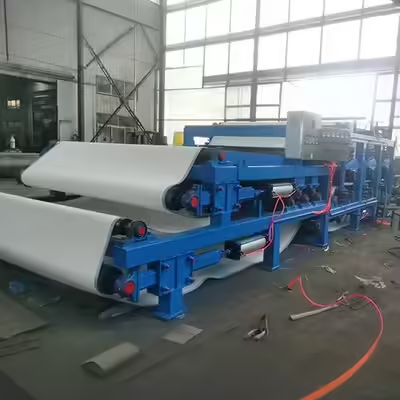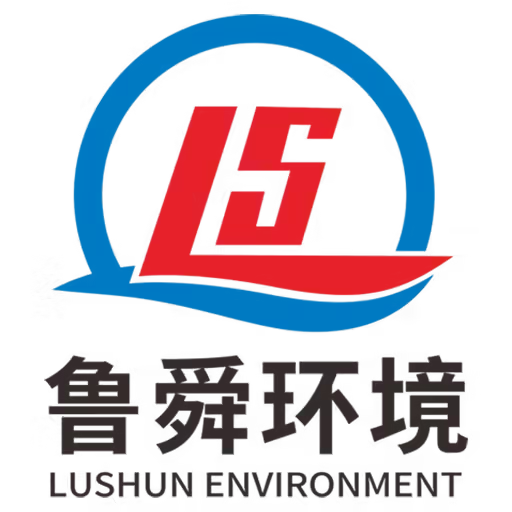Welcome to My Blog! 🌟
I’m so glad you’re here! Before we jump into the exciting content, I’d love for you to connect with me on my social media platforms. It’s where I share extra insights, interact with our amazing community, and post regular updates. Here’s how you can join the conversation:
📘 Facebook: Follow me on Facebook for more updates
Now, let’s dive into the journey ahead. I hope you find everything here both engaging and valuable. Together, let’s explore, learn, and grow! 🚀
Table of Contents
Introduction

In the realm of industrial wastewater treatment and sludge dewatering, the China belt filter press stands out as a reliable and efficient solution. With China leading the global manufacturing sector for environmental machinery, the development of belt filter press equipment has advanced significantly in terms of quality, design, and affordability. Whether applied in municipal sewage systems, food processing, mining, or chemical industries, a China belt filter press offers cost-effective and continuous solid-liquid separation, optimizing productivity while minimizing environmental impact.
This blog delves into seven amazing facts about China belt filter press systems that not only highlight their benefits but also explain why they are gaining popularity across various industries worldwide.
Fact 1: China Belt Filter Press Systems Use Continuous Dewatering Technology
One of the most impressive features of this filtration solution is its ability to perform continuous dewatering. Unlike batch-operated systems, the belt press operates nonstop, allowing for large volumes of sludge to be processed efficiently, reducing downtime and maximizing productivity.
This uninterrupted dewatering process uses a series of tensioned filter belts that squeeze water from sludge through multiple zones, typically including gravity drainage, wedge pressure, and high-pressure shear sections. Each stage is optimized to gradually increase pressure and extract as much moisture as possible without damaging the sludge cake.
Furthermore, the automation level of most modern units enables operators to reduce labor involvement while maintaining consistent output quality. Integrated control systems allow for real-time adjustments based on feed consistency and flow rates, ensuring stable operation even under fluctuating conditions.
Industries with high-volume wastewater, such as textile dyeing, electroplating, paper manufacturing, or large-scale food processing, greatly benefit from the consistent and efficient performance of these presses. Their ability to handle continuous loads without compromising quality makes them indispensable for facilities with demanding operating cycles.
Fact 2: China Belt Filter Press Models Cater to Diverse Industrial Needs

There is no one-size-fits-all in sludge management, and Chinese manufacturers understand this well. That is why the market offers a broad range of models tailored to varying capacities, sludge characteristics, and operational requirements. This customization ensures that each facility gets the right press for its specific needs.
Some units are designed for maximum cake dryness, reaching moisture contents below 60%, which is ideal for reducing disposal volumes and associated costs. Others prioritize high throughput to accommodate fast-moving production environments. Still, others strike a balance between both, offering moderate cake dryness with efficient flow handling.
In terms of physical size, equipment ranges from compact, space-efficient units suitable for mobile or containerized wastewater treatment to large-scale installations engineered for municipal sewage systems and centralized treatment plants. Facilities with limited floor area or constrained layouts benefit from vertical or modular configurations that reduce footprint without sacrificing performance.
Customization options abound, including materials of construction like SS304, SS316L, or duplex stainless steel to match the corrosiveness or hygiene requirements of the sludge. Users can also choose from various belt materials and pore sizes, motor configurations (including energy-efficient VFDs), and control systems compatible with existing plant automation infrastructure.
The breadth of options and adaptability makes this equipment suitable for diverse applications—from chemical and pharmaceutical plants to agricultural and mining operations. This flexibility not only extends usability but also ensures optimized results under specific environmental and process conditions.
Fact 3: Energy and Water Consumption Are Impressively Low
Sustainability is a growing concern in modern manufacturing and waste management. A major advantage of the China belt filter press is its low energy and water consumption during operation.
Unlike other dewatering systems like centrifuges, which consume a high amount of energy, the belt press relies on mechanical pressure and gravity to separate water from solids. Additionally, most systems are designed with water reuse features that recycle wash water to reduce consumption.
Here is a comparison of average resource consumption:
| Equipment Type | Power Consumption (kWh/m³) | Water Usage (L/m³) | Maintenance Frequency |
|---|---|---|---|
| China Belt Filter Press | 0.2 – 0.5 | 30 – 50 | Low |
| Centrifuge System | 1.0 – 2.5 | 50 – 100 | Moderate to High |
| Vacuum Filter | 0.8 – 1.2 | 40 – 60 | Moderate |
The table illustrates that a China belt filter press can reduce operational costs by consuming less energy and water, a key factor in its popularity among eco-conscious industries.
Fact 4: Automation and Smart Control Are Common in China Belt Filter Press
Modern China belt filter press equipment often includes advanced automation features. From progModern China belt filter press equipment is increasingly integrated with advanced automation and smart control technologies. These systems utilize cutting-edge components such as programmable logic controllers (PLCs), human-machine interfaces (HMIs), and IoT-based remote monitoring platforms, enabling seamless industrial connectivity and process optimization.
Key smart features commonly found in these presses include:
- Automated belt tension and tracking: Sensors and servo motors continuously monitor belt alignment and tension, making real-time adjustments to prevent slippage or misalignment, which reduces wear and extends belt life.
- Real-time sludge flow monitoring: Advanced flow meters and sensors measure sludge feed rates and consistency, allowing the control system to optimize press speed and pressure for maximum dewatering efficiency.
- Auto-cleaning systems: Automated cleaning cycles periodically wash the filter belts and rollers to prevent clogging, reduce manual maintenance, and maintain consistent filtration performance.
- Remote troubleshooting and diagnostics: With IoT connectivity, operators and technicians can monitor machine health remotely, receive alerts for potential issues, and perform diagnostics without the need for on-site visits, which is especially valuable in hazardous or hard-to-access locations.
This high level of automation not only significantly reduces the need for manual labor but also improves operational precision, consistency, and overall safety. In industries where reliability is critical—such as chemical manufacturing, municipal wastewater treatment, and mining operations—these smart-operated systems help minimize downtime, optimize energy use, and ensure continuous, trouble-free operation.
Fact 5: High Quality at Competitive Cost

China’s rise as a global powerhouse in manufacturing environmental machinery is due not only to competitive pricing but also to steadily improving quality, innovation, and adherence to international standards. Chinese belt filter press manufacturers have invested heavily in research and development, advanced production techniques, and rigorous quality control to meet and often exceed global expectations.
Most leading manufacturers comply with internationally recognized certifications such as ISO 9001 for quality management, CE marking for European safety standards, and UL certification for North American markets. These certifications provide assurance that the products are reliable, safe, and built to high standards.
Ongoing improvements in material science, such as the adoption of corrosion-resistant stainless steels (e.g., SS304, SS316L, duplex steel), and precision mechanical engineering enhance the durability and longevity of the presses. Enhanced welding techniques, computerized machining, and automated assembly lines contribute to consistent build quality and performance.
As a result, this category of equipment delivers an excellent cost-performance ratio, frequently outperforming pricier Western counterparts in similar applications. The combination of affordability, customization options, and strong after-sales support makes these systems particularly attractive to companies looking to expand operations, enter new markets, or upgrade aging infrastructure without incurring prohibitive costs.
Conclusion
The China belt filter press continues to evolve as a top-tier solution for industrial sludge dewatering. With benefits like continuous operation, low energy usage, wide adaptability, and smart control systems, it’s no surprise that industries worldwide are embracing this technology.
From small-scale manufacturers to municipal wastewater plants, the versatility and affordability of a China belt filter press make it a compelling investment. As environmental regulations become more stringent and sustainability becomes a competitive advantage, having reliable and efficient dewatering equipment is more crucial than ever.
Choosing a China belt filter press is not just a cost-saving decision—it’s a step toward modern, efficient, and eco-friendly industrial operation.
FAQ
Q1: How does a China belt filter press differ from a plate and frame press?
A China belt filter press operates continuously using pressure from belts to squeeze water from sludge, while a plate and frame press works in batches and typically offers higher pressure but slower processing speed.
Q2: Is a China belt filter press suitable for oily or fibrous sludge?
Yes, many models are designed specifically to handle oily or fibrous sludge with modified belts and improved pre-dewatering zones.
Q3: How long does a China belt filter press last?
With proper maintenance, most units can last 8–15 years. Belt replacement and routine inspections are key to longevity.
Q4: Can the China belt filter press be used outdoors?
Yes, many systems come with weather-resistant housings and enclosures, making them suitable for outdoor installation.
Q5: What are common maintenance tasks for a China belt filter press?
Regular tasks include belt cleaning, lubrication of moving parts, tension adjustment, and periodic system calibration.






